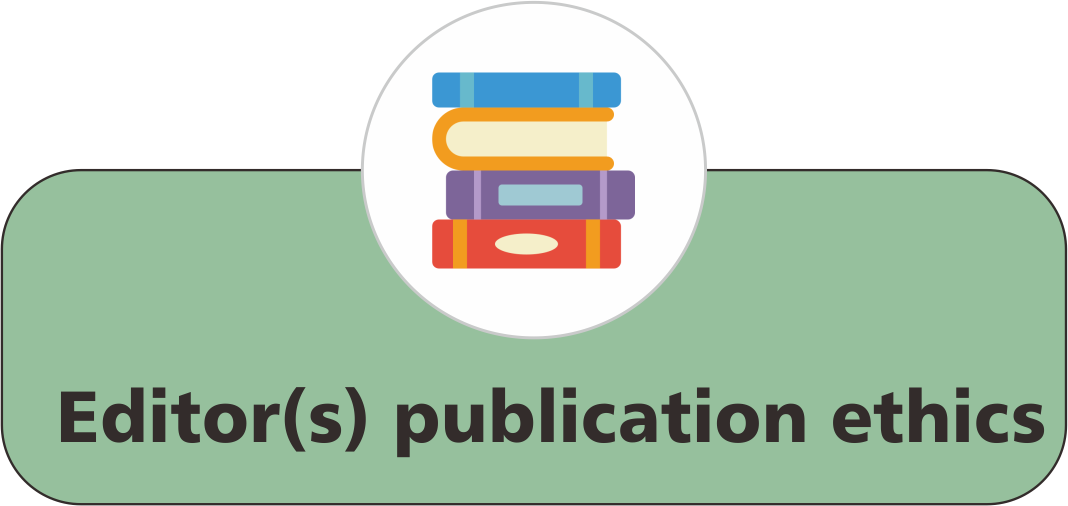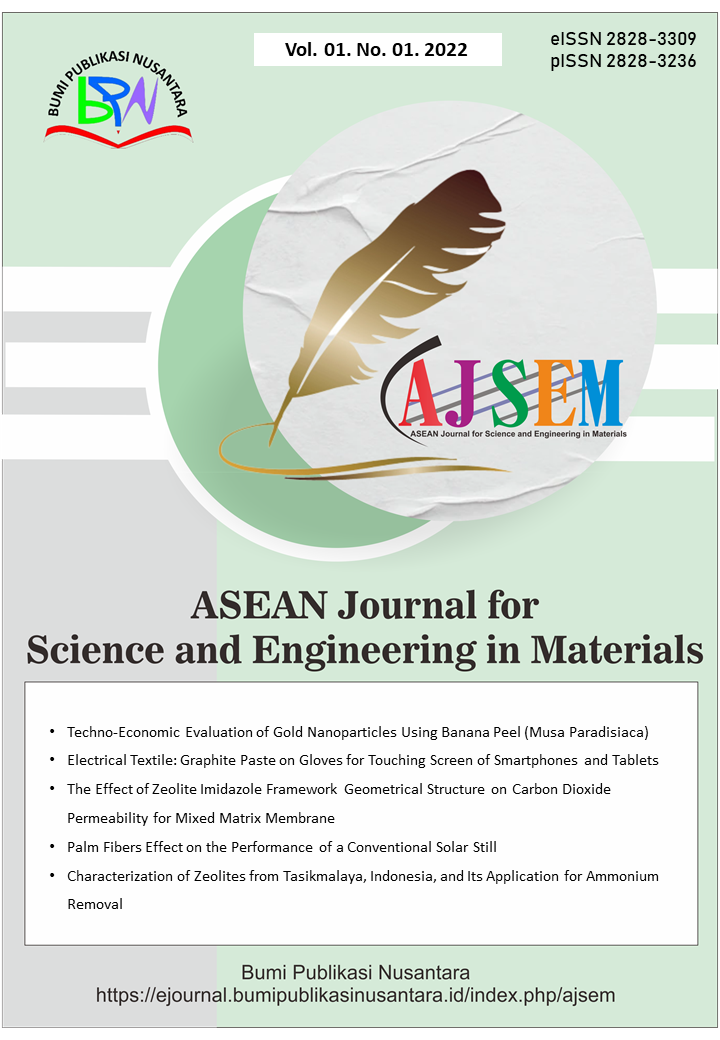In-vitro Analysis of Antimicrobial Activities of Green Synthesized Silver Oxide Nanoparticles on some Microorganisms found in Open Wound
 ), Idongesit Edem Okon(2), George Iloegbu Ndukwe(3), Patricia Adamma(4), E. Ekwumemgbo(5),
), Idongesit Edem Okon(2), George Iloegbu Ndukwe(3), Patricia Adamma(4), E. Ekwumemgbo(5),
(1) Ahmadu Bello University
(2) Nigerian Institute of Transport Technology
(3) Ahmadu Bello University
(4) Ahmadu Bello University
(5) Ahmadu Bello University
 Corresponding Author
Corresponding Author
Abstract
Keywords
References
Abdulmaleek, R.O., Ndukwe, G.I., Okon, I.E., and Ekwumemgbo, P.A. (2023). Green route synthesis and characterization of silver oxide nanoparticles using ocimum gratissimum leaf extract. Journal of Materials and Environmental Science, 14(12), 1494-1503.
Ahluwalia, V., Sasikumar, E., Kumar, V., Kumar, S., and Sangwan, R.S. (2018). Nano silver particle synthesis using swertia paniculata herbal extract and its antimicrobial activity. Microbial Pathology, 114, 402-408.
Ajayi, A.M., Tanayen, J.K., Ezeonwumelu, J.O.C., Dare, S., Okwanachi, A., Adzu, B., and Ademowo, O.G. (2014). Anti-inflammatory, anti-nociceptive and total polyphenolic content of hydroethanolic extract of ocimum gratissimum L. leaves. African Journal of Medicine and Medical Sciences, 43(1), 215-225.
Bessa, L.J., Fazii, P., Di Giulio, M., and Cellini, L. (2015). Bacterial isolates from infected wounds and their antibiotic susceptibility pattern: Some remarks about wound infection. International Wound Journal, 12(1), 47-52.
Erdogan, A., and Rao, S.S.C. (2015) Small intestinal fungal overgrowth. Current Gastroenterology Reports, 17(4), 1-7.
Fayyadh, A.A., and Alzubaidy, M.H.J. (2021) Green-synthesis of Ag2O nanoparticles for antimicrobial assays. Journal of the Mechanical Behavior of Materials, 30, 228–236.
Heiland, D.H., Masalha, W., Franco, P., Machein, M.R., and Weyerbrock, A. (2016). Progression-free and overall survival in patients with recurrent glioblastoma multiforme treated with last-line bevacizumab versus bevacizumab/lomustine. Journal of Neuro-oncology, 126, 567-575.
Humphries, R., Bobenchik, A.M., Hindler, J. A., and Schuetz, A.N. (2021). Overview of changes to the clinical and laboratory standards institute performance standards for antimicrobial susceptibility testing, M100. Journal of Clinical Microbiology, 59(12), e00213-21.
Kaushik, D., Kamboj, S., Kaushik, P., Sharma, S., and Rana, A. (2013). Burn wound: Pathophysiology and its management by herbal plants. Chronicles of Young Scientists, 4(2), 86-86.
Khan, I., Saeed, K., and Khan, I. (2019). Nanoparticles: Properties, applications and toxicities. Arabian Journal of Chemistry, 12(7), 908-931.
Klockgether, J., Cramer, N., Wiehlmann, L., Davenport, C.F., and Tümmler, B. (2011). Pseudomonas aeruginosa genomic structure and diversity. Frontiers in Microbiology, 2, 150.
Lindholm, C., and Searle, R. (2016). Wound management for the 21st century: Combining effectiveness and efficiency. Intenational Wound Journal, 13, 5-15.
Martins-Green, M., Petreaca, M., and Wang, L. (2013). Chemokines and their receptors are key players in the orchestra that regulates wound healing. Advances in Wound Care, 2(7), 327-347.
Meganathan, R. (2001). Biosynthesis of menaquinone (vitamin K2) and ubiquinone (coenzyme Q): A perspective on enzymatic mechanisms. Vitamins and Hormones, 61, 173-218.
Mohanty, A., Das, C., Dash, S., and Sahoo, D.C. (2010). Physico-chemical and antimicrobial study of poly herbal formulation. International Journal of Comprehensive Pharmacy, 4(4), 1-4.
Offiong, O.E., and Martelli, S. (1994). Antibacterial activity of metal complexes of benzyl and benzoin thiosemicarbazones. Societa Chimica Italiana, 49(7-8), 513-518.
Pereira, V., Lopes, C., Castro, A., Silva, J., Gibbs, P., and Teixeira, P. (2009). Characterization for enterotoxin production, virulence factors, and antibiotic susceptibility of staphylococcus aureus isolates from various foods in Portugal. Food Microbiology, 26(3), 278-282.
Ramesh, P.S., Kokila, T., and Geetha, D. (2015). Plant mediated green synthesis and antibacterial activity of silver nanoparticles using emblica officinalis fruit extract. Spectrochimica Acta Part A: Molecular and Biomolecular Spectroscopy, 142, 339-343.
Rappé, M.S., and Giovannoni, S.J. (2003). The uncultured microbial majority. Annual Reviews in Microbiology, 57(1), 369-394.
Ravindran, E.R.S., Shanmugam, K., Veeramani, S., Ilangovan, R., Ali, D., Almutairi, B.O., Palanivel, H., and Goel, M. (2022). Effect of phytofabricated silver oxide nanoparticles on wound pathogens. Journal of Nanomaterials, 2022(1), 1760829.
Shume, W.M., Murthy, H.A., and Zereffa, E.A. (2020). A review on synthesis and characterization of Ag2O nanoparticles for photocatalytic applications. Journal of Chemistry, 2020(1), 5039479.
Sultan, A.E., Abdullah, H.I., and Niama, A.H. (2023). Synthesis of silver oxide nanoparticles using different precursor and study cytotoxicity against MCF-7 breast cancer cell line. Nanomedicine Research Journal, 8(3), 259-267.
Wang, P.H., Huang, B.S., Horng, H.C., Yeh, C.C., and Chen, Y.J. (2018). Wound healing. Journal of the Chinese Medical Association, 81, 94–101.
Article Metrics
Abstract View : 304 times
: 304 times Download : 112 times
Download : 112 times
Refbacks
- There are currently no refbacks.
Copyright (c) 2024 Bumi Publikasi Nusantara

This work is licensed under a Creative Commons Attribution-ShareAlike 4.0 International License.









